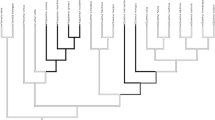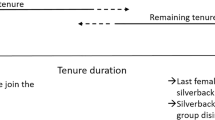Abstract
Considerable interspecific variation in female social relationships occurs in gregarious primates, particularly with regard to agonism and cooperation between females and to the quality of female relationships with males. This variation exists alongside variation in female philopatry and dispersal. Socioecological theories have tried to explain variation in female-female social relationships from an evolutionary perspective focused on ecological factors, notably predation and food distribution. According to the current “ecological model”, predation risk forces females of most diurnal primate species to live in groups; the strength of the contest component of competition for resources within and between groups then largely determines social relationships between females. Social relationships among gregarious females are here characterized as Dispersal-Egalitarian, Resident-Nepotistic, Resident-Nepotistic-Tolerant, or Resident-Egalitarian. This ecological model has successfully explained differences in the occurrence of formal submission signals, decided dominance relationships, coalitions and female philopatry. Group size and female rank generally affect female reproduction success as the model predicts, and studies of closely related species in different ecological circumstances underscore the importance of the model. Some cases, however, can only be explained when we extend the model to incorporate the effects of infanticide risk and habitat saturation. We review evidence in support of the ecological model and test the power of alternative models that invoke between-group competition, forced female philopatry, demographic female recruitment, male interventions into female aggression, and male harassment. Not one of these models can replace the ecological model, which already encompasses the between-group competition. Currently the best model, which explains several phenomena that the ecological model does not, is a “socioecological model” based on the combined importance of ecological factors, habitat saturation and infanticide avoidance. We note some points of similarity and divergence with other mammalian taxa; these remain to be explored in detail.
Similar content being viewed by others
Author information
Authors and Affiliations
Additional information
Received: 30 September 1996 / Accepted after revision: 20 July 1997
Rights and permissions
About this article
Cite this article
Sterck, E., Watts, D. & van Schaik, C. The evolution of female social relationships in nonhuman primates. Behav Ecol Sociobiol 41, 291–309 (1997). https://doi.org/10.1007/s002650050390
Issue Date:
DOI: https://doi.org/10.1007/s002650050390




